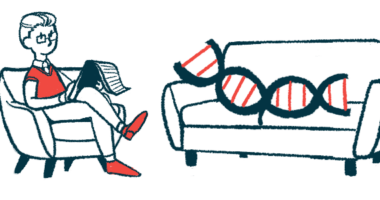SMA treatment benefits increase after Spinraza-Zolgensma switch
Motor function improved, breathing difficulties didn’t worsen in study

Some 70% of children with spinal muscle atrophy (SMA) type 1 who underwent treatment with Spinraza alone or with Spinraza and then Zolgensma reached some motor milestones over 18 months, with greater improvements in those who received Spinraza early followed by Zolgensma, according to a small study.
Ninety percent of treated patients experienced no respiratory decline, and 30% maintained oral feeding following treatment.
The results offer “valuable insights into the real-world safety and clinical efficacy of disease-modifying therapies for SMA 1 patients,” the researchers wrote.
The study, “Type-1 spinal muscular atrophy cohort before and after disease-modifying therapies,” was published in Arquivos de Neuro-Psiquiatria.
SMA is primarily caused by mutations in the SMN1 gene that result in little to no SMN protein being produced. SMN is critical for the health of motor nerve cells, the specialized neurons that control voluntary movement. Without SMN, patients experience symptoms like progressive muscle weakness and atrophy (wasting), as well as difficulties breathing and eating.
Early treatment improves odds of success
The most common form of SMA is type 1, which accounts for about 60% of all SMA cases. In SMA type 1, patients develop symptoms before 6 months of age. Without treatment, children with SMA type 1 typically do not reach motor milestones such as rolling over or sitting up.
But children who receive SMA treatment early in life have improved lifespans and an increased likelihood of achieving motor milestones.
One disease-modifying therapy, Spinraza (nusinersen), is intended to slow, or even halt, the progressive muscle weakness and wasting that characterizes SMA. Delivered as an injection into the spinal canal, Spinraza binds to the gene SMN2 to make it produce working SMN instead of the shorter, less stable, and poorly working protein it normally generates.
Another disease-modifying therapy, Zolgensma (onasemnogene abeparvovec-xioi), is the first approved gene therapy for SMA. A single dose of Zolgensma delivers a working copy of SMN1 aiming to increase levels of SMN in motor neurons.
Researchers in Brazil examined the real-world use of Spinraza and Zolgensma in 10 children with SMA type 1.
Patients were divided into two groups. Five children received Spinraza alone at a mean age of 53.6 months (almost 4.5 years). The other five were treated with Spinraza at a mean age of 7 months and then with Zolgensma at approximately 15.2 months.
Before treatment, none of the patients had head control or reached any motor milestone.
Two of the five children in the group that received only Spinraza exhibited motor improvements, with one child gaining head control at 43 months and another being able to sit unsupported at 21 months.
Among the children who received earlier Spinraza treatment and were later given Zolgensma, three of the five were able to sit without support at an average age of almost 3, and two children walked with support at an average age of almost 2. One child in the group was treated before the onset of symptoms.
Measurements of motor skills with the Children’s Hospital of Philadelphia Infant Test of Neuromuscular Disorders (CHOP-INTEND), showed an average increase (improvement) of 10.2 points in the first Spinraza-treated group. Treatment with Spinraza followed by Zolgensma led to an average improvement of 33 points (CHOP-INTEND maximum is 64).
“The difference between the groups,” the scientists wrote, “is possibly related to the earlier treatment initiation” in the second group.
Breathing, eating
The researchers found 90% of patients did not experience more difficulties with breathing over the 18 months they were followed. No patient needed to start on invasive ventilation during the study, although the four children who were on this support before treatment remained on it during the study. Of the six children who completed evaluation with non-invasive ventilation, one needed ventilation for more than 16 hours per day.
Improvements in eating ability were variable. Of the patients who could eat orally at the end of follow-up, two could eat solid food and one could eat soft food. One child was able to speak in meaningful sentences.
As for safety, no patient experienced adverse effects related to Spinraza. One child had changes in liver enzymes after Zolgensma, prompting another course of treatment with the corticosteroid prednisolone. No patient died.
“Although our study is limited by a small sample size and a short evaluation period, this information is relevant and portrays the effectiveness of disease-modifying therapies, with limited adverse events, leading to a transformation in long-term prognosis,” the researchers wrote.









